Happiness and Resources
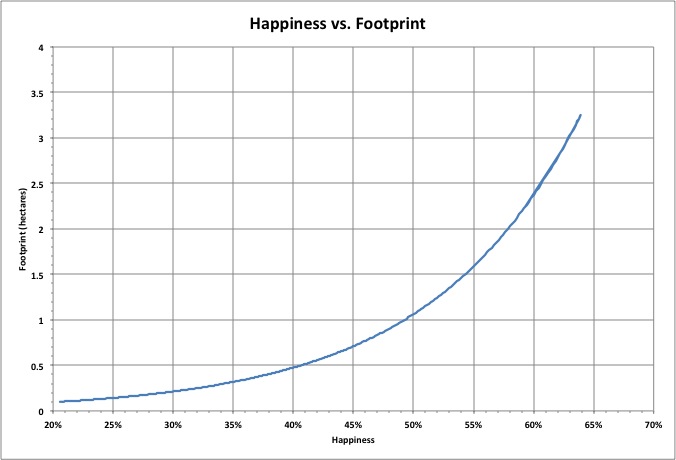 |
As happiness increases, the (per-capita) ecological footprint increases exponentially, which is proportional to the mass of resources consumed per year. |
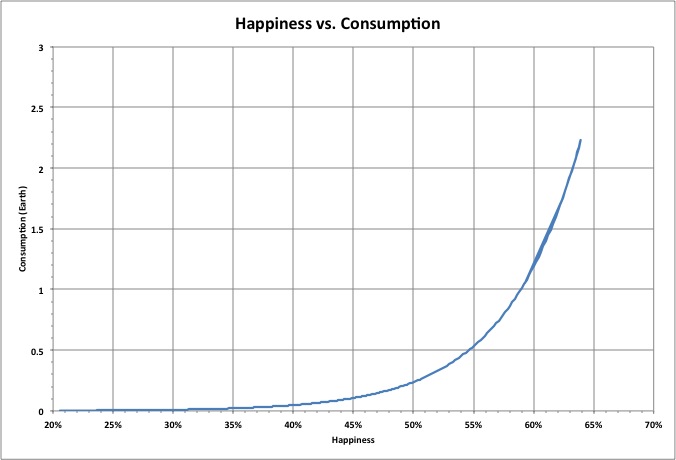 |
Because population is proportional to per-capita consumption, total consumption increases rapidly with happiness. Here, consumption is measured as a fraction of total natural capacity (Earths). |
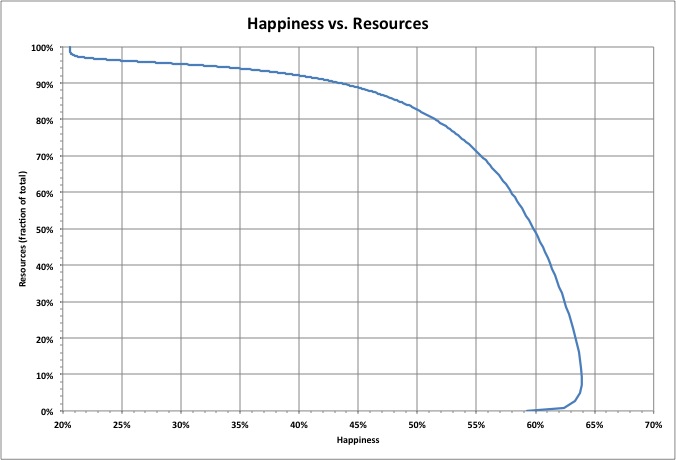 |
The population-consumption model projects that the total amount of resources in 1 AD was 96.5 times the Earth's natural capacity. As happiness has increased, resources fell, reaching 31.2 Earths by the end of 2010. They will likely continue to fall as consumption increases, until the population crashes in 2027. Roll over the image to see resources as a multiple of natural capacity. |
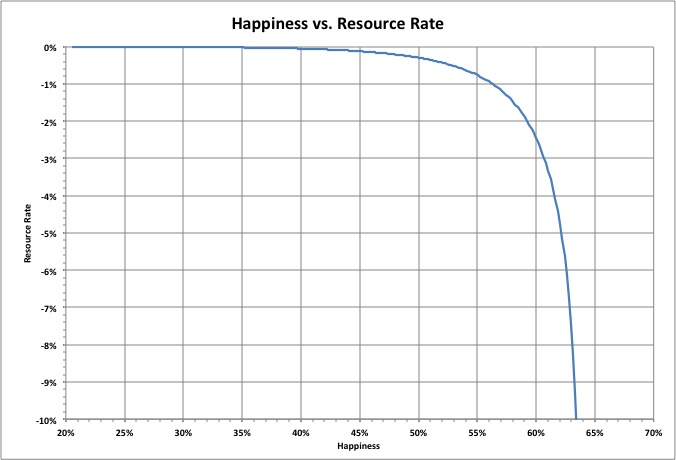 |
The annual rate of change of resources (resource rate) varied little with happiness until recently. Roll over the image to see all projections. |
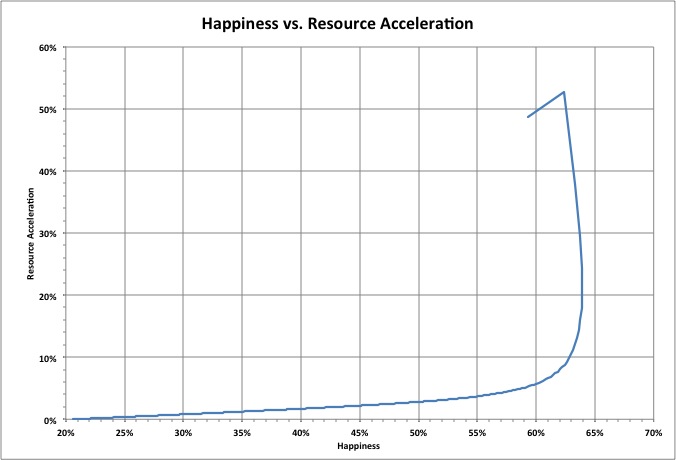 |
The rate of change of the resource rate (the resource acceleration) was approximately proportional to happiness until happiness had doubled its minimum value (1in 1875, at 41.2%). Note that when the population peaks (reaches a maximum), in 2021, there will be 10% of the resources remaining and happiness will be 64%, which is 3.1 times the minimum. Happiness will begin decreasing after the population peak in 2021 and the remaining resources will finally be used up. Roll over the image to see the linear curve fit. |
See also:
- Happiness and Acceleration
- "Two-Thirds Happiness" (blog post)
- Remaining Resources: A Simulated History
- Limits to Happiness
- Happiness Calculations
© Copyright 2011 Bradley Jarvis. All rights reserved.